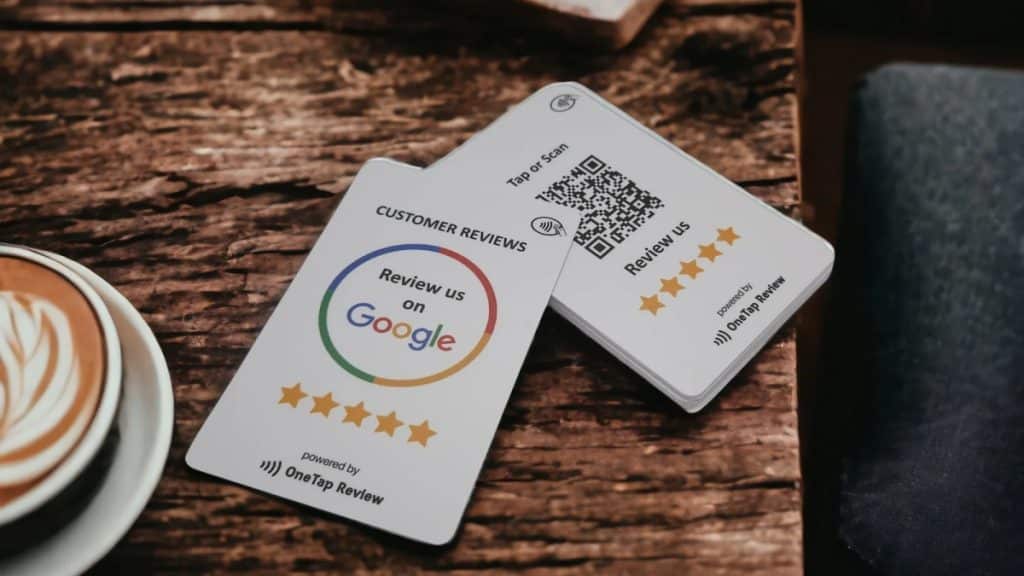The digital environment has changed how businesses gather customer feedback. Traditional methods, like surveys and comment boxes, often have accessibility and timing limitations. Technology now offers options like Google review cards, making it easier for consumers to share their experiences quickly. This shift reflects a broader trend of businesses adopting more immediate and informal ways to communicate with their audiences.
Understanding the differences between these methods helps businesses refine their feedback strategies. A Google review card makes it easier for customers to leave quick feedback, prioritizing public responses, while traditional techniques provide more control over collected input. Comparing these approaches can help businesses choose the best way to gather and act on customer opinions.
Accessibility and Convenience in Collecting Customer Feedback
Digital tools have changed how customers share their opinions. Google review cards simplify the process using QR codes and direct links, allowing users to provide feedback almost instantly. In contrast, traditional methods, such as paper surveys or comment boxes, require more effort and in-person participation, which can reduce engagement. Easy access to feedback channels leads to higher response rates, reshaping how businesses collect and interpret customer details.
Immediate responses set digital feedback apart. Google review cards allow businesses to see customer sentiment in real-time. These tools work across desktops and smartphones, eliminating data entry barriers common in traditional methods. Adding a QR code to a receipt or website can encourage more customers to leave feedback effortlessly.
Credibility and Influence on Public Perception
Public visibility is a key advantage of Google Reviews, offering transparency that internal surveys lack. Verified user reviews add credibility and build trust with potential customers, unlike anonymous comment box submissions, which may not carry the same weight. This trust factor influences buying decisions and plays a major role in shaping a brand’s reputation.
Google reviews also remain uneditable, adding to their credibility. Customers see them as genuine experiences, while traditional feedback methods lack this level of public scrutiny. Highlighting a few curated reviews on a business website, along with customer responses or timestamps, can further boost credibility and reinforce transparency.
Data Analysis and Actionability of Customer Insights
Automated data collection is a major advantage of Google reviews. Businesses can quickly analyze feedback with minimal manual work, whereas traditional methods require time-consuming manual evaluation, leading to delays. The ability to track keyword trends in reviews helps businesses identify recurring customer concerns and make targeted improvements. This difference means Google reviews provide actionable insights faster than conventional approaches.
Google’s structured rating system makes it easy to collect quantitative feedback, while traditional surveys often rely on open-ended responses that take longer to process. Google dashboards also provide historical data, allowing businesses to identify trends efficiently. Traditional summaries, on the other hand, may struggle to adapt quickly. Using digital tools for real-time reporting can improve a business’s ability to respond to customer needs.
Control and Moderation Over Feedback Submission
Negative feedback is a visible part of Google reviews, directly influencing potential customers. Unlike traditional methods, where businesses control which comments are shared, public reviews require companies to handle criticism openly. While this transparency can be beneficial, it also leaves businesses vulnerable to spam or review bombing, which can distort their image.
Traditional feedback systems offer more control, often filtering out extreme responses. Both methods have ways to manage misleading reviews, but their approaches to ethics and accountability differ. Some businesses use AI-powered moderation tools to detect spam or inappropriate content while still allowing constructive criticism.
Customer Engagement and Response Strategies
Google reviews allow businesses to engage with customers publicly. This open communication differs from traditional feedback channels, where responses are often private. Responding to reviews helps businesses build stronger connections and reinforce trust. While traditional methods provide limited engagement, Google reviews create ongoing dialogue opportunities.
Timely responses show customers that their opinions matter. Addressing concerns quickly can reduce frustration and demonstrate a commitment to improvement. Automated alerts for new reviews help businesses respond promptly, strengthening relationships with their customer base.
Collecting customer feedback the right way helps businesses build trust and improve service. Google review cards make it easy for customers to share opinions instantly, while traditional methods offer more privacy and control. Digital tools help businesses track trends and respond quickly, but public reviews also mean handling criticism openly. Engaging with feedback—whether online or through private surveys—shows customers their opinions matter. A mix of both methods can give businesses useful details, improve customer relationships, and create a better overall experience. The key is making feedback simple, accessible, and something businesses actively use to grow.
